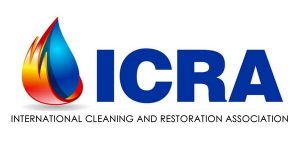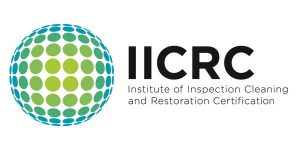
It’s a fact. Your home or business is some 10 times more likely to be hit by water damage than by fire damage. And even including theft, around 1/4 of all home insurance claims are from water damage. But don’t think it’s all nature’s fury. Most incidents result from some sort of leak in the roof, plumbing, or appliances. So it’s actually easy to prevent water damage in your home or business, and part of good home maintenance. The list of tips below is rather lengthy, but don’t feel overwhelmed and never get around to it. Just use the bullet items as a checklist and set a goal of checking off one or two each week.
Water Damage
We have a couple of sayings: “minor leaks aren’t” and “there’s no such thing as minor flooding.” It doesn’t take a very big leak or all that much water all at once (sometimes on the scale of just a gallon) for areas to stay damp for weeks. The surface may feel dry, but water can be trapped deeply beneath. Besides mold growth, that leads to warped, split, and rotting wood… destroyed drywall… and more. All that can be going on for days, weeks, or even months before the destruction becomes visible and obvious.
Stop It Before It Even Starts
Your first line of defense is keeping water and dampness at bay, so here’s our list of how to prevent destruction from ever getting started. Our first tip is one of the most important.
- Know where your shut-off valve is! It usually takes a special tool to turn it, so be sure you know where that is as well.
Otherwise, you could well be facing 500 gallons or more per hour until help arrives. Next, your water bill can actually be your friend.
- Keep an eye out for any jump in your water bill. Surprisingly, that’s often the first indication of a problem with the plumbing.
For the rest of our list of tips for preventing water damage, the central theme is good business facility and home maintenance.
Your Property
- Check for water leaks in the building, especially around doors and windows. There may be obvious gaps, or tell-tale signs such as discolored paint or caulk. Dark areas of wood also indicate water damage.
- Inspect your roof at least once a year and make sure that any damaged shingles are replaced. Take a few trips up in the attic with a good flashlight and look for dark, discolored, moldy, or damaged areas.
- Seal any cracks in the foundation as well as wall penetrations such as pipes and wiring.
- Check for dampness, mold, or dark spots inside sink cabinets and around toilets, tubs, and showers.
- Replace any broken tub, shower, or floor tile (or damaged grout) immediately.
- Disconnect outdoor hoses before freezing weather.
- Check roof gutters and down spouts. If water backs up your gutters it can make its way into the building, including hard to spot places in the attic and inside walls.
- Make sure there’s adequate drainage away from the house or business. Experts suggest a slope of at least 6 inches for every 10 feet; if not down spouts should extend to 5 to 10 feet away from the building. (https://www.houselogic.com/organize-maintain/home-maintenance-tips/how-to-prevent-water-damage/).
- Condensation on the insides of windows indicates an indoor moisture problem.
- Keep an eye on indoor humidity with an inexpensive meter. Indoor relative humidity should be 30-50%. If not, consider portable or whole-house dehumidifiers.
Plumbing and Appliances
- Check your washing machine hoses from time to time; they’re a major source of major trouble. If they’re just “rubber” and not steel braided replace, them as soon as possible. Otherwise replace them every 5 years or so.
- If you’re often away, consider installing an automatic shutoff valve.
- Consider purchasing water detection alarms for places such as near the water heater, washing machine, and dishwasher.
- Check the building’s water pressure with an inexpensive meter. Readings should be in the range of 50-70 psi (pounds per square inch). Anything above 100 psi puts excess stress on appliances and plumbing.
- Don’t neglect your water heater. Major leaks and burst tanks are a common cause of home insurance claims.
- Check for water leaks in the plumbing using the utility’s meter. You should be able to find specific instructions at your water company’s website. A leak detection specialist uses far more sensitive instruments to detect plumbing issues, and is usually well worth the trouble. They also have infrared imaging cameras that help track down building water leaks as well.
- Never use caustic drain cleaners — they can indeed damage pipes and can cause leaks with repeated use.
- To avoid a water backup in the sink, never pour grease down a sink or toilet. It solidifies and builds up inside pipes.
If you’re in a flood-risk area you can do more than just have the right business or home insurance policy. Any ground floor remodeling and additions should use stone, tile, sealed concrete, and waterproof wall board. There are also many construction details that can help, right down to the type of nails used. If there’s any below grade areas make sure you have a sump pump and that it’s properly maintained and working properly.
Once It Happens
Unfortunately, preventing water damage is never a sure thing. Once there’s been a sudden soaking there’s only 24-48 hours before mold growth and other water damage really get going. If it’s just a small area you can speed drying by using a shop wet-vac, lifting carpet, and using fans 24 hours a day for at least several days, often a week or more. If the weather is dry open windows, otherwise use a room dehumidifier.
If an entire room is affected or if there’s been standing water, then professional remediation services are a must to prevent water damage. Service First a licensed contractor and a leading damage restoration company with the latest equipment and certified technicians to take care of all of your property — furniture and possessions as well as the building itself. We accept all insurance and can be there in an hour or less 24/7.









